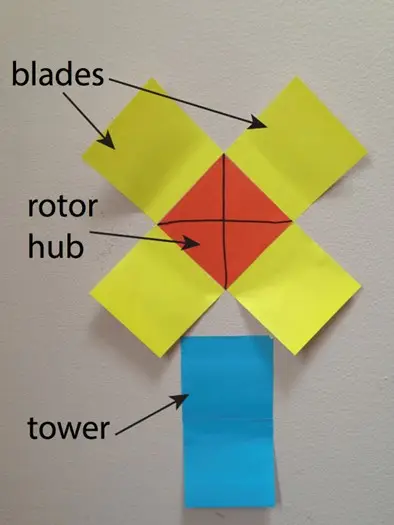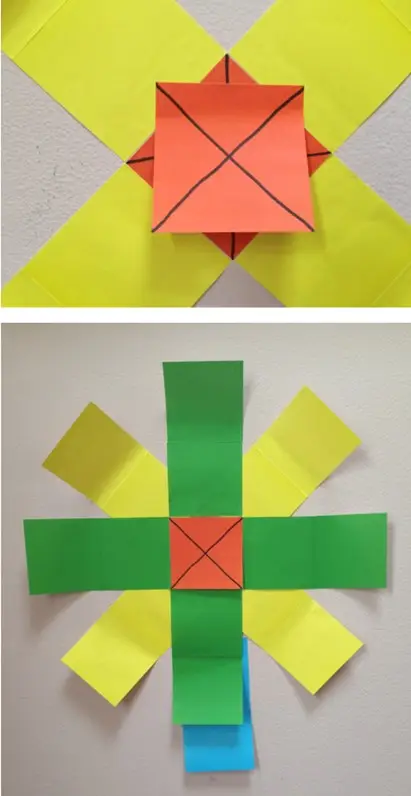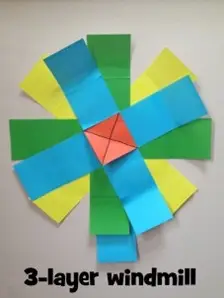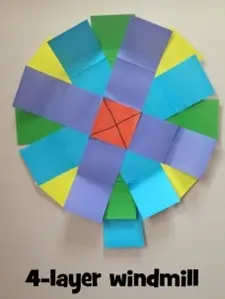Life is a swirl of color, but our screens break it down into zillions of dots. That’s what kids learned in Pixel-palooza as they made a picture entirely out of little colored squares. It was like zooming into a phone screen with a microscope.
To take it up a notch, kids can explore shapes using sticky notes and scale them up using math. Have them make their own wind farm by building windmills out of sticky squares, then add more blades, or arms, as you go!
- Grab a 3×3 inch pack of sticky notes in 5 different colors. Make sure you have an empty stretch of space on the wall or floor.
- Start out by building a 4-blade windmill. Draw a “+” from corner to corner on the rotor hub. Then add two sticky notes for the tower.
- Then build the rest of the windmill, making each blade 1 note longer.
- Now put a spin on it by adding another set of blades! Draw a “+” on another sticky note for the 2nd layer’s rotor hub. Then place it on the windmill by rotating it 45 degrees.
- Add the 2nd layer of blades.
- Keep the spinning going by adding a 3rd and 4th layer!




To see what else you can make when art and math come together, check out Pictures That Stick at Bedtime Math, our research proven app that boosts kids’ math skills the most fun way possible.
